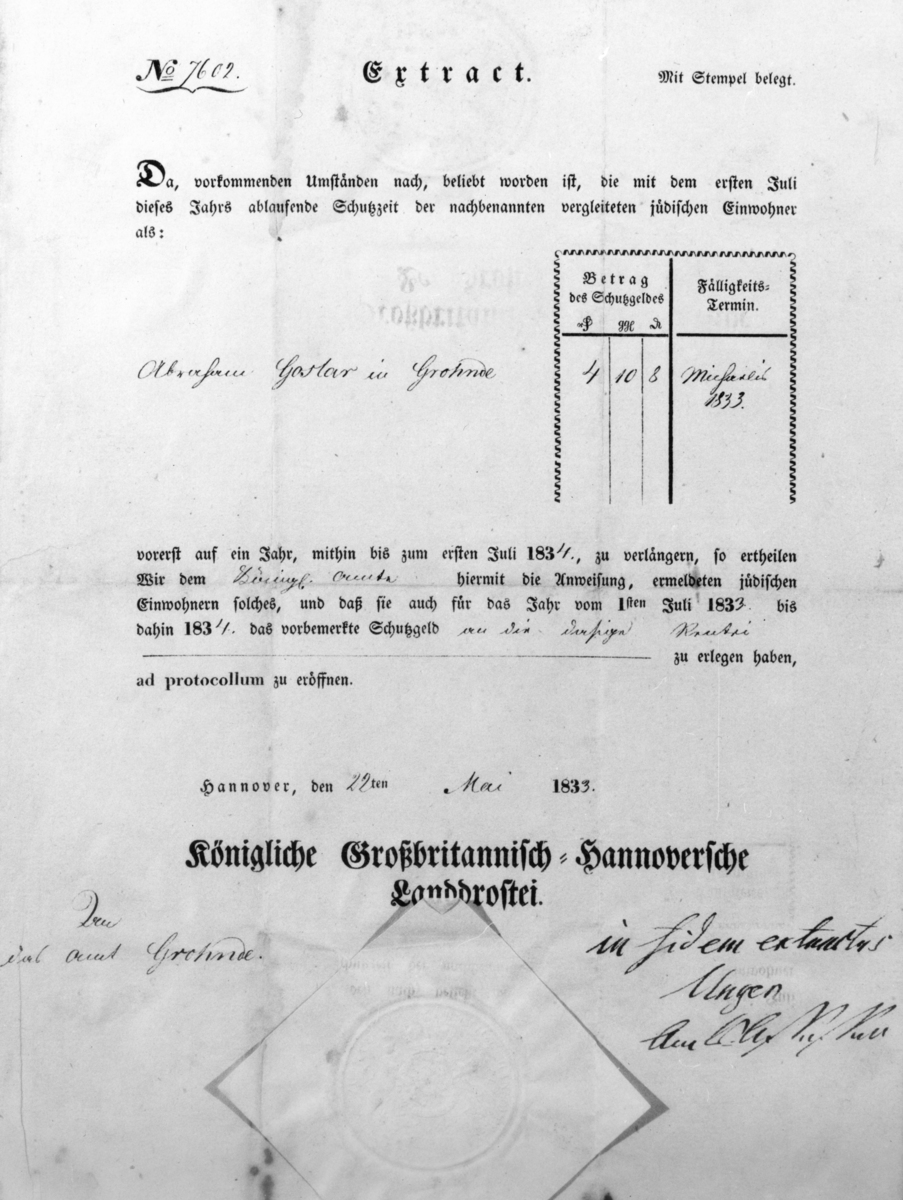Source

Source: bpk-Bildagentur, 20030357. For rights inquiries, please contact Art Resource at requests@artres.com (North America) or bpk-Bildagentur at kontakt@bpk-bildagentur.de (for all other countries).
The system of “protected Jews” [Schutzjuden] originated in the early Middle Ages; it allowed a small number of Jews who paid protection money [Schutzgeld] to obtain a privileged legal status. The system was instituted by authorities mainly to extract revenue from Jewish traders, exploit their financial services, and regulate their settlement. During the Enlightenment, German thinkers debated the pros and cons of extending civil liberties and equal rights to Jews, but it was Napoleon who actually emancipated Jews in the German territories that he conquered. He then influenced other states to follow suit. With its Edict of 1812, the Kingdom of Prussia granted Jews civil rights, freedom of trade, and freedom of residence, specifically abolishing the system of special payments for protected status. Following the end of the Napoleonic Wars, Jewish emancipation was withdrawn in all of the states that had granted it previously. The certificate reproduced below attests to the return to the protective status system. It is dated May 22, 1833, and requests that a Jewish resident of the Kingdom of Hanover pay another year's Schutzgeld for protection from July 1, 1833, to July 1, 1834.

Source: bpk-Bildagentur, 20030357. For rights inquiries, please contact Art Resource at requests@artres.com (North America) or bpk-Bildagentur at kontakt@bpk-bildagentur.de (for all other countries).
© bpk